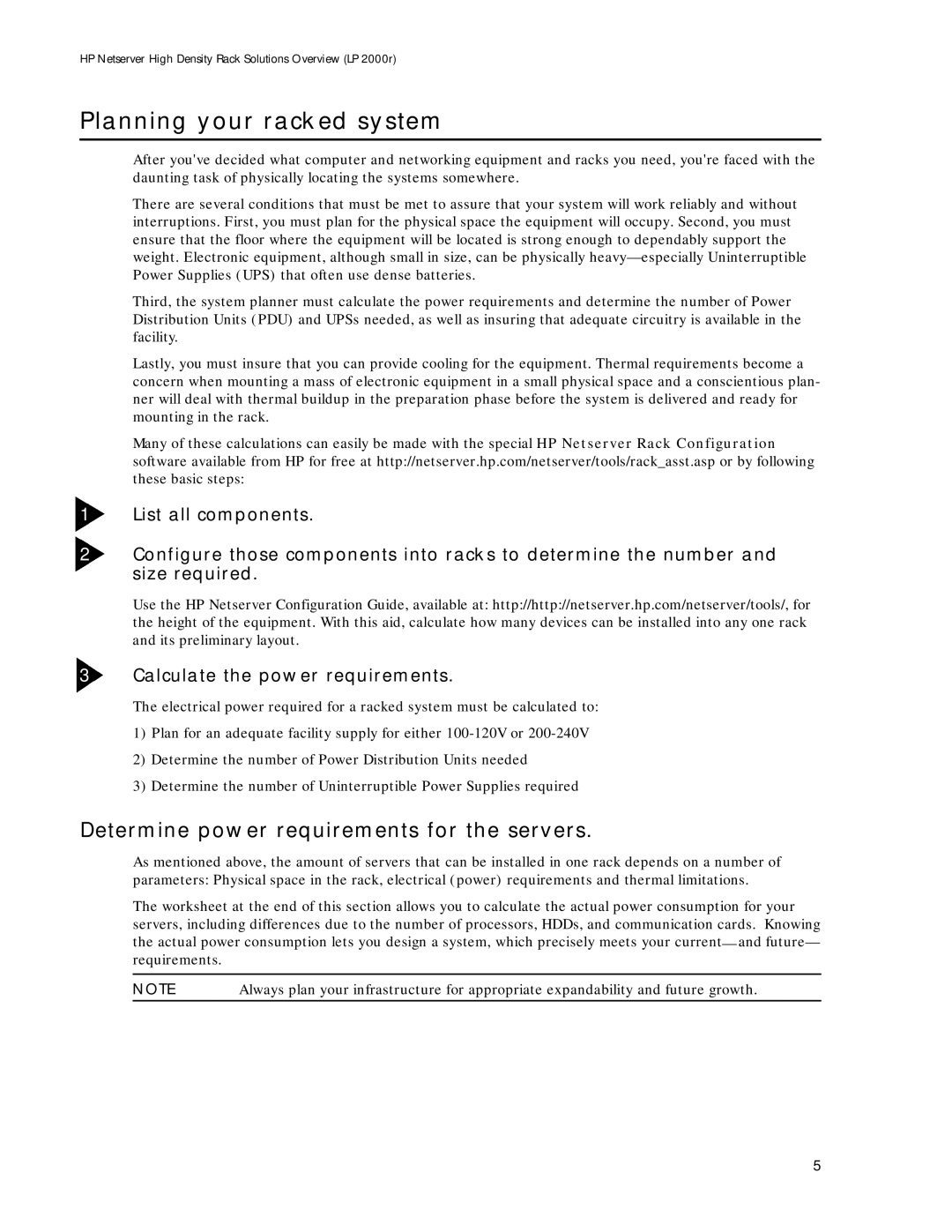
HP Netserver High Density Rack Solutions Overview (LP 2000r)
Planning your racked system
After you've decided what computer and networking equipment and racks you need, you're faced with the daunting task of physically locating the systems somewhere.
There are several conditions that must be met to assure that your system will work reliably and without interruptions. First, you must plan for the physical space the equipment will occupy. Second, you must ensure that the floor where the equipment will be located is strong enough to dependably support the weight. Electronic equipment, although small in size, can be physically
Third, the system planner must calculate the power requirements and determine the number of Power Distribution Units (PDU) and UPSs needed, as well as insuring that adequate circuitry is available in the facility.
Lastly, you must insure that you can provide cooling for the equipment. Thermal requirements become a concern when mounting a mass of electronic equipment in a small physical space and a conscientious plan- ner will deal with thermal buildup in the preparation phase before the system is delivered and ready for mounting in the rack.
Many of these calculations can easily be made with the special HP Netserver Rack Configuration software available from HP for free at http://netserver.hp.com/netserver/tools/rack_asst.asp or by following these basic steps:
1List all components.
2Configure those components into racks to determine the number and size required.
Use the HP Netserver Configuration Guide, available at: http://http://netserver.hp.com/netserver/tools/, for the height of the equipment. With this aid, calculate how many devices can be installed into any one rack and its preliminary layout.
3Calculate the power requirements.
The electrical power required for a racked system must be calculated to:
1)Plan for an adequate facility supply for either
2)Determine the number of Power Distribution Units needed
3)Determine the number of Uninterruptible Power Supplies required
Determine power requirements for the servers.
As mentioned above, the amount of servers that can be installed in one rack depends on a number of parameters: Physical space in the rack, electrical (power) requirements and thermal limitations.
The worksheet at the end of this section allows you to calculate the actual power consumption for your servers, including differences due to the number of processors, HDDs, and communication cards. Knowing the actual power consumption lets you design a system, which precisely meets your current— and future— requirements.
NOTE | Always plan your infrastructure for appropriate expandability and future growth. |
|
|
5
